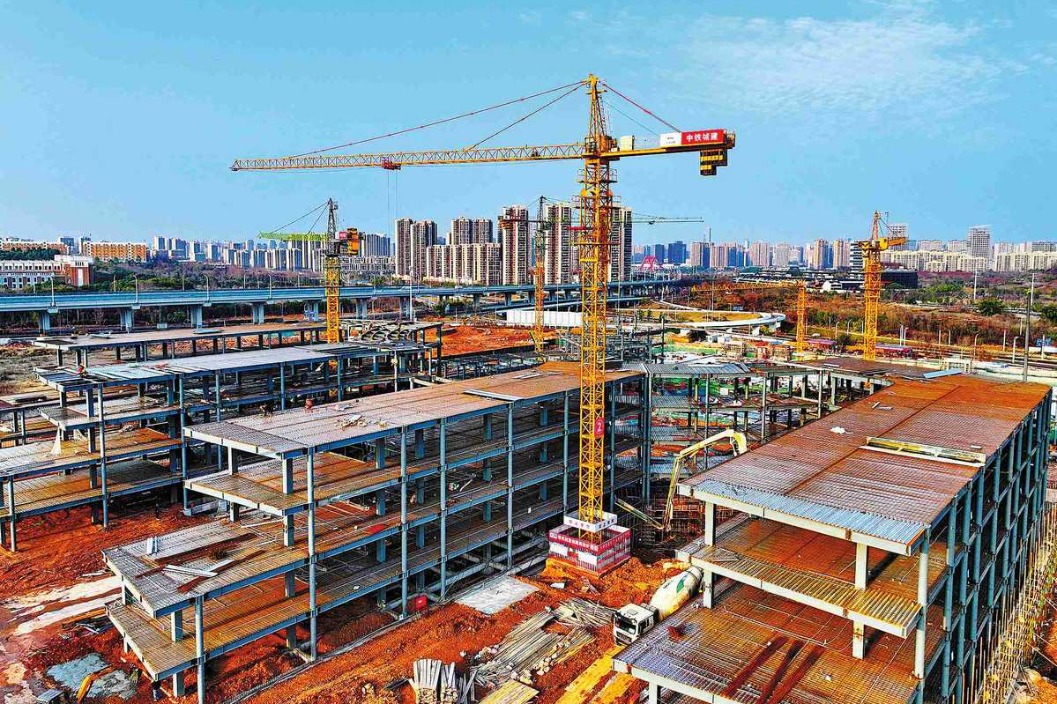When silk culture meets intelligent manufacturing


At China's premier production hub for chemical fiber fabrics in Shengze town of Wujiang district in Suzhou, Jiangsu province, a new generation of innovative textiles is quietly weaving a new narrative for the traditional industry.
Among them is an innovative temperature-responsive fabric that expands when it's cold and contracts when it's warm, adjusting its insulation based on ambient conditions.
This so-called "smart cold-expansion fabric" can sense temperature drops and automatically expand to increase the thickness of its inner air layer, thereby enhancing insulation. When the temperature rises, the material thins back down, returning its original state suited for warmer conditions.
The innovative fabric is just one of many breakthroughs developed by Suzhou Romrol Fashion Group, a textile technology enterprise based in Shengze that focuses on fiber and design innovation.
By closely tracking global developments in fiber materials and applying them boldly across the weaving processes, the company said it releases about 1,000 new fabrics each year.
"Innovation is the driving force that keeps us ahead in the industry. Our subsidiary invests 3 to 5 percent of its annual revenue into research and development, which is considered high by industry standards," said Xu Derong, chairman of Romrol.
In fact, its innovation spirit goes beyond creative functions, extending into fabric design and operational strategies as well.
Earlier this summer, a cool, mint-green printed fabric with a fresh mulberry leaf motif caught wide attention. It appears delicate, with the veins of the leaves subtly visible beneath the fabric's surface.
"We created the leaf pattern using real mulberry leaves through a rubbing technique, which was then digitally scanned and applied to the textile," said Li Qiankun, a material designer at Romrol.
Li believes his mission is to help the traditional textile sector break free from its reputation as a low-end manufacturing industry and reimagine its value at the intersection of cultural confidence and technological innovation.
Amid an industry where over 30 percent of apparel inventory often goes unsold, Li's team has adopted a digitally enabled rapid-response printing model to help clients address overstock issues.
By using big data algorithms to forecast color trends and building modular smart production lines, the textile company has enabled flexible manufacturing with small-batch, multi-variety output. Their 3D virtual garment system has also helped brand clients lock in production capacity in advance, optimizing efficiency from concept to finished product.
"The best way to carry forward tradition is through innovation. When silk culture meets intelligent manufacturing, what we're weaving is not just fabric, but the future of an entire industry," Li said.
Today, more than 50 percent of Romrol's high-end fabric business is geared toward overseas markets, with partnerships spanning international fashion and sports brands, Xu said.
During the recent 137th China Import and Export Fair (Canton Fair) in Guangzhou, Guangdong province, the company's latest materials attracted significant attention from global buyers, with sample orders signed on the spot by clients from Mexico, Guatemala, Australia and Malaysia.
"Our fabric was even used in uniforms for the Russian national ski team. We produced the textile, then collaborated with Russian designers to create the final outdoor gear," Xu noted.
"This kind of two-way collaboration, exporting fabrics while importing design expertise, has deepened both the emotional and professional recognition of our brand among international fashion houses."
Private enterprises like Romrol have long served as the backbone of Wujiang's foreign trade. In the first quarter of this year alone, the district's private firms achieved an import and export value of 26.07 billion yuan ($3.62 billion), up 11.1 percent year-on-year and accounting for over 60 percent of the district's total trade.
This year, Wujiang will continue leveraging the strength of its private sector to deepen opening-up efforts, including organizing local companies to participate in domestic and international trade fairs, assisting foreign trade enterprises in securing orders, attracting key cross-border e-commerce projects and accelerating the transformation and incubation of traditional foreign trade businesses, said Sun Jianjiang, district chief of Wujiang district.




































